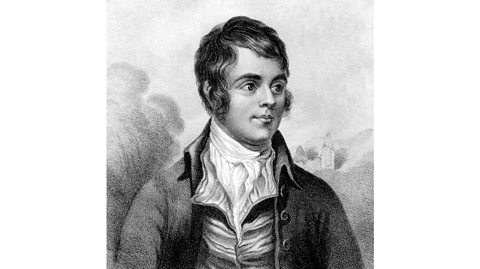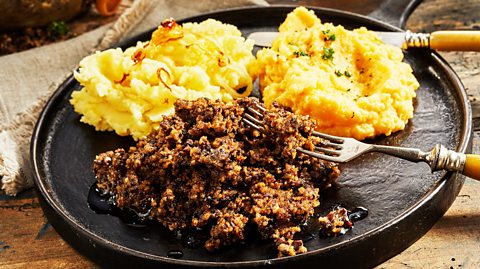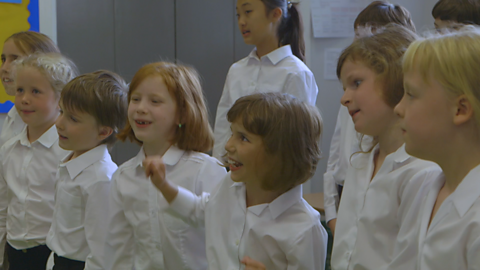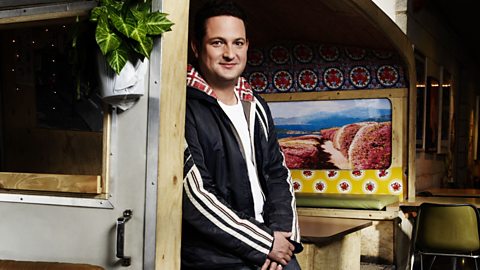
Burns Night celebrates the life of Scottish bard Robert Burns with food, poetry and music. It is celebrated on Burnsã birthday, 25 January.
Robert Burns is the author of many famous Scottish poems written in the late 1700s.
Burns' work includes Auld Lang Syne, which was later set to traditional folk music and is now sung at New Year parties.
The first Burns Night was held in 1801 to mark the fifth anniversary of Burnsã death. The evening was hosted by some of his closest friends who celebrated his life by feasting and reading his work.
Since then there have been 218 Burns Night celebrations, expanding from Scotland to all over the world, including China and .
A Burns supper is supposed to be shared with family and friends, eating and , followed by a recital of Burnsã work and Toasts To The Lassies.
Although the night features many traditional recitations there are some who like to add music and dancing to the eveningãs programme, often with musical interludes or a cûˋilidh.


Cûˋilidh is derived from the Gaelic word to visit, and is linked with a time when house parties would host guests with entertainment ranging from telling stories and singing songs based on local folklore.
Over time the cûˋilidh evolved into a structured step dance which requires a caller to shout out actions.
Professional accordionist and cûˋilidh dance leader Ian Lowthian said that a cûˋilidh can last for many hours, needing the musicians to play over 100 songs for each event and remaining alert throughout the musical marathon.
ãSome of the dances we play start at seven oãclock and donãt finish until one oãclock in the morning.
"So to keep it going for all that time youãve got to play in excess of 150 tunes in one night and a lot of them are quite fast.ã
Traditional Scottish jigs and reels are played the most at cûˋilidhs because of the sense of pulse and high-energy which are needed to drive the dancing.
Ian has been playing the accordion professionally since the age of 12 when his mother first encouraged him to play at local Burns Night performing solo turns, soon becoming the star turn in the Scottish border village Ettrickbridge.
When starting out Ian remembers playing ãThe Dark Island and a set of jigs, including Donald Ian Rankineã. These were some of his favourites but he would also play European accordion music from France and Italy.
Ian says that his favourite cûˋilidh ensemble line up includes accordion, drums and the fiddle but there are ãexciting bandsã that have begun to include all sorts of instruments, from saxophones to tubas.
ãThe more exciting bands do more exciting tunesã.


The swell of instruments and broader set list hasnãt gone unnoticed in the traditional Scottish music scene, especially with the older generation of cûˋilidh goers who prefer the traditional line up and music.
There are many musicians, like Ian, who think that traditional music and cûˋilidhs need to evolve to survive.
The traditional music of Scotland has evolved in the last four decades.
A lot of the music used to depend on singers leading the groups but now the virtuoso instrumentalists lead.
Some skills remain the same despite the change in instruments, such as memorising a vast and constantly growing music catalogue and knowing complex music key signatures.
Most importantly, Scottish traditional music and dances are still being passed down to new generations at schools.
There are classes that introduce cûˋilidh dances to primary children, and young musicians are encouraged to partake in solo turns at school Burns dinners and suppers.
As well as being a professional musician, Ian Lowthian teaches music and gives them jigs and reels to learn preparing them for work and so the next wave of traditional musicians are involved in the music culture of Scotland.
Public funding initiatives, such as support music and other creative Scottish industries so that its traditional cultures can be showcased regularly and celebrated globally.

More from Bring the Noise
Play It!: Explore song elements or play and sing along to music
Use the three different modes to see the elements that make up a song, play or clap along with the music or make and listen back to your own version of a song. (KS1)

Gareth Malone's singing techniques
Guides on how to teach singing to primary school children (EYFS)

National DJ Day 2020
What's the story behind National DJ Day?
